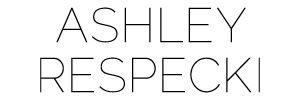Labor and Delivery Department
University of Chicago Medical Center
Chicago, Illinois
Fall 2009, Ball State University
Design team: Ashley (Wilson) Respecki & Nicholas Respecki
Consultant: Paul Strohm, AIA, ACHA, LEED AP, HOK
Obstetric departments and birthing centers in hospitals across the country are turning their focus on the relationship between mother and child. Obstetric departments in the early twentieth century were focused primarily on the separation of a recovering mother and new born baby. In the widely preferred model today, proximity of mother, baby, and family members is strengthened. This popular patient model is known as LDRP, or labor-delivery-recovery-postpartum. The design for a new Birthing Center on the University of Chicago’s Medical campus seeks to positively execute this LDRP model into the new urban hospital.
By focusing on issues of movement, circulation, privacy, and daylighting, this design developed a highly organic internal form in juxtaposition with the existing base building. The lobby and reception desk are positioned to the west of the public elevator core and to the direct east of the pedestrian walkway for easy registration and security purposes. Daylighting is most critical in patient rooms and with this design, LDRP rooms have been placed at the perimeter of the floor for access to daylight. Adjusting to circadian rhythms and sleep cycles is often difficult for newborn babies. To aid in improving these patterns, the neonatal intensive care unit and well baby nursery are also located at the perimeter of the building. Support spaces and C-section services are located within the center of the primary circulation.
The LDRP model for obstetrics increases the amount of time mother and baby are in direct contact with one another. This model also limits the amount of transition and spacial changes both mother and baby endure. For this particular design, spatial considerations were made for all parties involved in the birthing process: mother, infant, family members, nursing and medical staff. There are three main zones within this LDRP room layout. The staff zone provides medical care-takers with the equipment and resources necessary for proper care of both mother and baby during the delivery and recovery process. The mother/child zone is designed with open spatial accommodations for ease in moving delivery equipment during birth, to allow the infant cart to move into the space after exam, and to provide for family visitation during recovery. The position of the patient bed allows direct views outside to the surrounding campus. To make patients and visitors more comfortable within the patient room, medical gases are hidden by familiar artwork and the delivery cart is stored away in its own room. The family zone is located at the end of the room and is designed to accommodate extended stay visitors. This space features a sofa sleeper, private television, and office desk that can all be isolated from the medical care functions occurring within the LDRP room.

